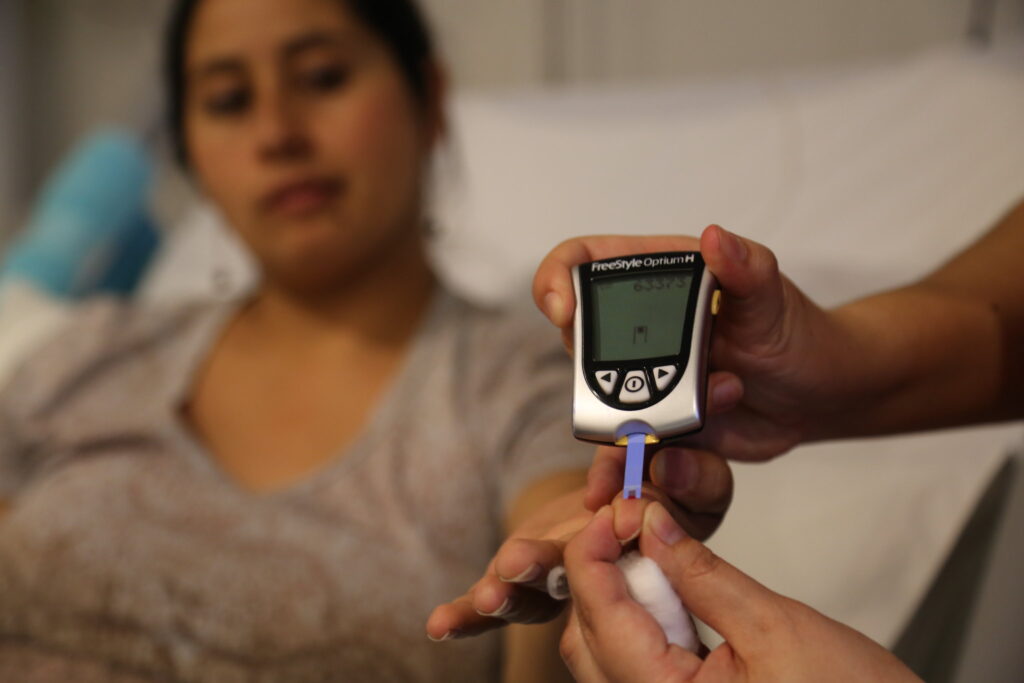
Between 2001 and 2017, the prevalence of diabetes among children and adolescents in six areas of the U.S. increased significantly for both type 1 and type 2 diabetes, according to a study.
The document published this Tuesday in JAMA The estimated prevalence of type 1 diabetes among young people aged 19 years or younger increased significantly, from 1.48 per 1,000 young people to 2.15; while the prevalence of type 2 diabetes among people aged 10 to 19 years increased from 0.34 per 1,000 young people to 0.67, which is almost double what was previously recorded.
The results showed that among young people aged 19 years or younger, 4,958 of 3.35 million had type 1 diabetes in 2001, 6,672 of 3.46 million in 2009, and 7,759 of 3.61 million in 2017.
In the case of type 2 diabetes in young people aged 10-19 years, 588 out of 1.73 million had such disease in 2001, 814 out of 1.85 million in 2009, and 1,230 out of 1.85 million in 2017.
Thus, the estimated prevalence of type 1 diabetes per 1,000 youth aged 19 years or younger increased significantly from 1.48 in 2001 to 1.93 in 2009 and to 2.15 in 2017, an absolute increase of 0.67 per 1,000 youth and a relative increase of 45.1 percent over 16 years.
The study also showed that the largest absolute increases were observed among non-Hispanic whites at 0.93 per 1,000 youth, followed by non-Hispanic African-American youth at 0.89 per 1,000.
The estimated prevalence of type 2 diabetes per 1,000 youth aged 10-19 years increased significantly from 0.34 in 2001 to 0.46 in 2009 to 0.67 in 2017, an absolute increase of 0.32 per 1,000 and a relative increase of 95.3 percent over 16 years.
The largest absolute increases for type 2 diabetes were seen among non-Hispanic African American youth at 0.85 per 1,000, followed by Latinos at 0.57 per 1,000 in 2017, an absolute increase of 0.32 per 1,000 and a relative increase of 95.3 percent over 16 years.
According to the Centers for Disease Control and Prevention's 2020 National Diabetes Statistics Report, there are a total of 34.2 million people in the U.S. with the disease, 10.5 percent of the nation's population.
Of these, 26.9 million people - including 26.8 million adults - have the disease diagnosed, and 7.3 million people - 21.3 percent - are undiagnosed.
In addition, 88 million people over the age of 18 have prediabetes - 34.5 percent of the U.S. adult population - as do 24.2 million adults age 65 and older.
What is diabetes, what are types 1 and 2?
Diabetes is a chronic, long-term disease that affects the way the body converts food into energy.
Most of the food we eat is converted into sugar - also called glucose - which is released into the bloodstream. The pancreas produces a hormone called insulin, which acts as a key that allows the sugar in the blood to enter the body's cells for use as energy.
If a person has diabetes, his or her body does not produce enough insulin or cannot properly use the insulin it produces.
When there is not enough insulin or the cells stop responding to insulin, too much sugar is left in the bloodstream and, over time, this can cause serious health problems, such as heart disease, vision loss and kidney disease.
There is no cure for diabetes yet, but you can greatly reduce the effect it has on your life by practicing healthy lifestyle habits, taking medications as needed, getting information on diabetes self-management, and not missing appointments with your health care team.
There are three main types of diabetes: type 1 diabetes, type 2 diabetes and gestational diabetes ?during pregnancy.
Type 1 diabetes is caused by an autoimmune reaction - the body mistakenly attacks itself - that prevents the body from producing insulin. Approximately 5 to 10 percent of people have this type of diabetes.
Symptoms of this diabetes usually appear quickly. It is usually diagnosed in children, adolescents and young adults. People with type 1 diabetes must take insulin every day to survive. Currently, it is not known how to prevent it.
With type 2 diabetesIn this type of diabetes, the body does not use insulin properly and cannot keep blood sugar at normal levels. Approximately 90 to 95 percent of people with diabetes have this type of diabetes.
It is a process that evolves over many years and is usually diagnosed in adults - although it is increasingly occurring in children, adolescents and young adults. You may not feel any symptoms; therefore, it is important to test your blood sugar levels if you are at risk.
Type 2 diabetes can be prevented or delayed with healthy lifestyle changes, such as losing weight if you are overweight, eating a healthy diet and being physically active on a regular basis.
Gestational diabetes appears in pregnant women who have never had diabetes. Babies may be at increased risk for health complications.
Gestational diabetes usually goes away after the baby is born, but it increases the mother's risk of having type 2 diabetes later in life. It also makes it more likely that when the baby is a child or teenager, he or she will be obese and have type 2 diabetes later in life.
Diabetes is the seventh leading cause of death in the country and is the main cause of kidney failure, lower limb amputation and blindness in adults.
Over the past 20 years, the number of adults with diagnosed diabetes has more than doubled as the population in the United States has aged and become overweight or obese.
You may be interested in: Diabetes: Myths, Facts and Figures to Consider


